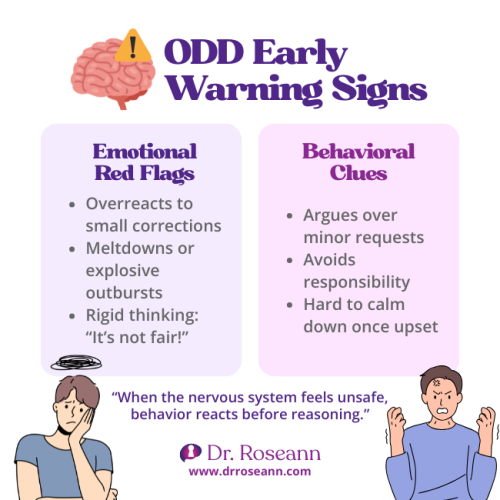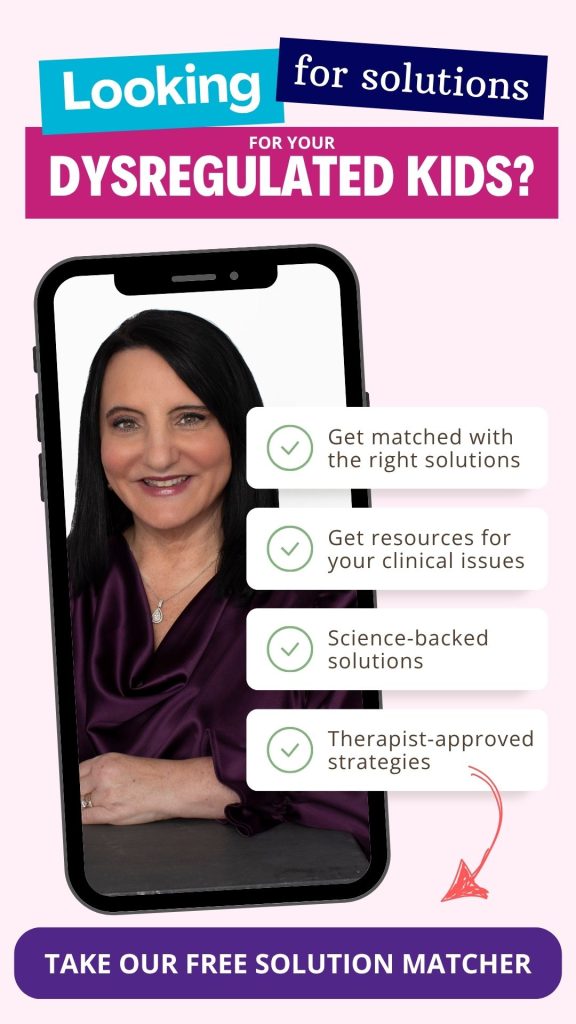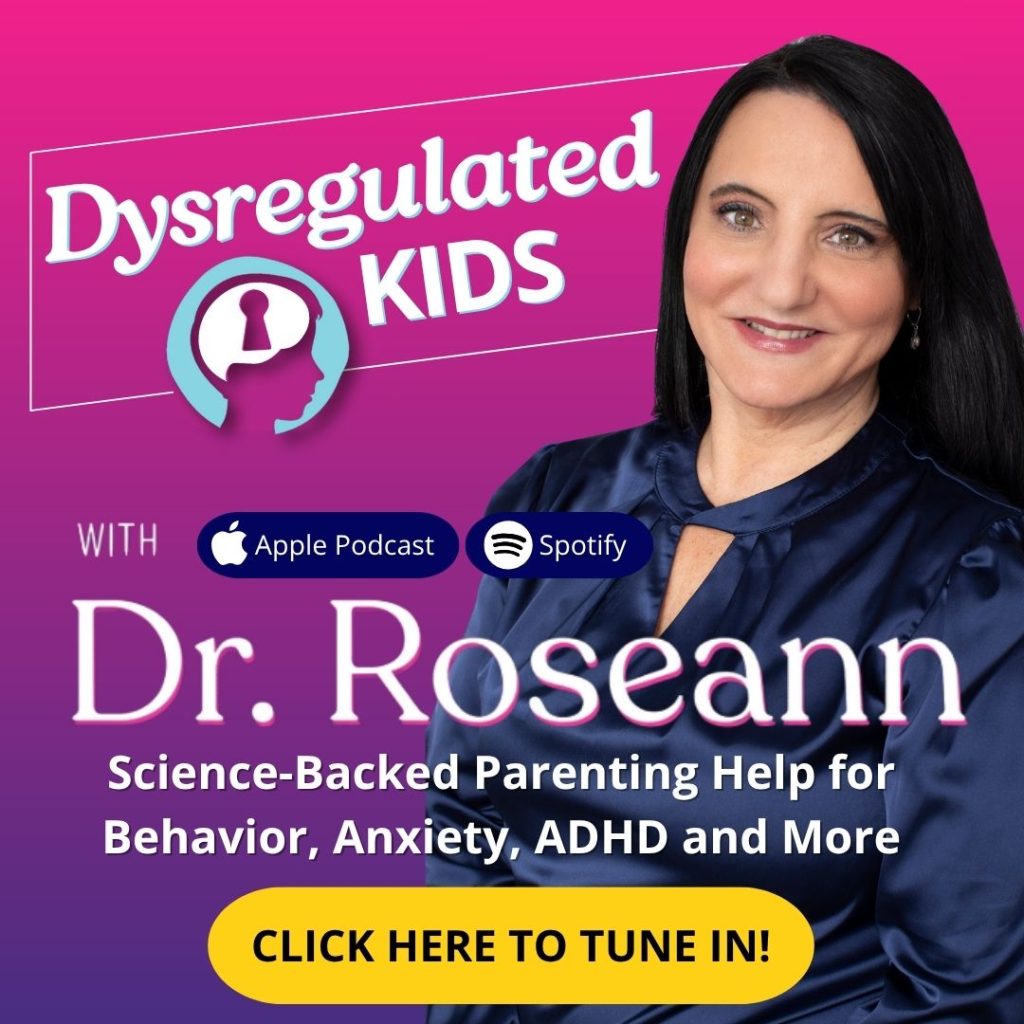Estimated reading time: 11 minutes
Does every day feel like a power struggle with your child? You’re not alone. So many parents feel trapped in that same exhausting cycle, wondering what happened to the calm moments.
What looks like defiance is usually something deeper — a brain stuck in fight, flight, or freeze. Oppositional Defiance Disorder (ODD) isn’t about a “bad” child; it’s about a dysregulated nervous system struggling to feel safe.
In this guide, we’ll unpack what ODD really is, why typical discipline strategies often make things worse, and how calming the brain first opens the door to real cooperation and connection.
Key Takeaways
- ODD isn’t misbehavior — it’s nervous system dysregulation.
- Behavior is communication—your child’s actions are messages from a stressed brain.
- You can’t correct until you regulate and connect. Calm must always come first.
- Traditional discipline fails when the brain isn’t calm. Regulation, not punishment, creates real change.
- Neurofeedback and brain mapping reveal the root of dysregulation, showing where calm can be restored.
- Natural, lifestyle-based interventions help calm the brain from the inside out—because healing starts with safety and balance.
- You’re not failing. Your child’s nervous system simply needs support—and there are proven, hopeful ways to help.
What Is Oppositional Defiance Disorder (ODD)?
Oppositional Defiance Disorder (ODD) is more than stubbornness — it’s a sign of a nervous system stuck in overdrive. When the brain lives in constant stress, it can’t shift out of defense mode, and that shows up as defiance, anger, or emotional outbursts.
ODD isn’t about a “bad” child. It’s about a brain trying to protect itself.
Research defines ODD as ongoing patterns of anger, irritability, and defiance lasting six months or more (American Psychiatric Association, 2013), but those behaviors are really signals of a dysregulated nervous system (Burke, 2012).
Common signs include:
- Frequent arguing or blaming others
- Refusing to follow directions
- Irritability or revenge-seeking
- Feeling easily annoyed or misunderstood
What’s really happening:
- The brain misreads limits as threats.
- The amygdala — the brain’s alarm center — fires, stress hormones flood the body, and the prefrontal cortex (the logic and reasoning part) shuts down.
That’s why reasoning or punishment doesn’t work. A dysregulated brain can’t learn, listen, or cooperate until it feels safe. When we calm the brain first, everything else begins to follow.

What’s the Difference Between ODD and ADHD?
Ever feel like your child’s behavior is a tug-of-war between chaos and control?You’re not imagining it. ODD and ADHD often intertwine, creating a frustrating cycle that really traces back to one root issue — a nervous system stuck in stress mode, quietly waving a signal for help (Miller et al., 2012).
ADHD tends to look like:
- Inattention or distractibility
- Impulsivity and acting before thinking
- Overstimulation or boredom sensitivity
- Trouble staying organized or on task
ODD often shows up as:
- Anger, arguing, or defiance
- Power struggles with adults
- A chronic fight-or-flight response
- Difficulty managing big emotions
While the symptoms differ, both reflect a dysregulated brain that can’t easily shift gears between calm and control.
That’s why these kids need regulation first — not reprimand. When we help the brain feel safe, focus and cooperation naturally follow.
ODD vs. Autism: Understanding Emotional and Behavioral Overlaps
Ever wonder, “Is this ODD, autism, or maybe both?” You’re not imagining it—these behaviors can overlap because each reflects a different stress response in the brain (Matson & Nebel-Schwalm, 2007).
Children with autism often react from sensory overload or communication struggles, while ODD behaviors arise from frustration or emotional threat.
Shared signs you might notice:
- Meltdowns or explosive outbursts
- Difficulty with change or transitions
- Missed social cues
- An intense need for control when anxious
The difference:
- Autism stems from sensory overwhelm—a brain flooded by too much input.
- ODD grows from emotional dysregulation—a nervous system stuck in fight-or-flight, trying to regain safety and control.
When we calm the brain first, those intense behaviors begin to soften, and connection becomes possible again.
Read more: Is It ODD or Something Else?
What Causes Oppositional Defiance Disorder?
When a child’s stress response stays on high alert, logic and self-control go offline. What looks like defiance is often the nervous system stuck in survival mode.
We see Oppositional Defiance Disorder (ODD) emerge from a mix of neurological, emotional, and environmental pressures (Mars et al., 2024).
Root causes of ODD:
- Nervous system dysregulation from chronic stress, trauma, or sensory overload
- Neurodevelopmental conditions like ADHD, autism, or PANS/PANDAS
- Family stress or inconsistent boundaries
- Sleep deprivation, poor diet, or toxin exposure
- Unmet emotional needs and lack of co-regulation
Parent Story:
Samantha, mom of an 8-year-old, said, “I used to think my son was being defiant on purpose. Once I understood his nervous system was overwhelmed, I stopped reacting — and he started calming faster.”
ODD doesn’t start with disobedience. It starts with dysregulation.
What Are the Early Signs of Oppositional Defiance Disorder in Children?

Catching the early signs of Oppositional Defiance Disorder (ODD) helps parents move from punishment to prevention (Stringaris et al., 2009). It’s not about “nipping bad behavior in the bud”—it’s about understanding what the brain is really trying to say.
Early signs:
- Frequent arguing over small requests
- Extreme sensitivity to “no” or correction
- Outbursts that feel disproportionate
- Rigid thinking (“It’s not fair!”)
- Trouble taking responsibility
- Difficulty calming once upset
These behaviors aren’t just stubbornness—they’re signs of a nervous system stuck in overdrive. When the brain feels unsafe, it reacts instead of reasons.
The good news? When we calm the brain first, cooperation, connection, and confidence start to grow.
Why Traditional Discipline Doesn’t Work for Kids with ODD
Traditional discipline assumes kids can simply choose to control their behavior. But dysregulated children haven’t developed that skill yet—their brains are still learning how to move from reaction to regulation (Hastings & Brown, 2002).
Punishment often fires up the same fight-or-flight response that caused the behavior in the first place, making real learning almost impossible.
What works better:
- Co-regulation: model calm breathing and presence
- Predictability: consistent routines reduce threat responses
- Repair over punishment: teach emotional safety and problem-solving
- Empathy before correction: validate feelings first, then redirect
Script swap:
❌ “Stop yelling at me!”
✅ “I can see you’re upset. Let’s take a breath together.”
When we meet dysregulation with calm, we teach the brain safety—the foundation for lasting change and connection.
How Does Oppositional Defiance Disorder Affect School and Learning?
Classrooms can easily overwhelm children with sensitive or dysregulated brains (Jones et al., 2015). The noise, quick transitions, and constant social buzz can trigger stress before anyone realizes what’s happening.
Supportive strategies that make a real difference:
- Fidgets, weighted lap pads, or noise-canceling headphones to reduce sensory overload
- Movement breaks or calming corners to set a calm tone for the day
- Morning emotional check-ins to set a calm tone for the day
- Clear routines and transition cues to lower anxiety
- Teacher–parent collaboration so support stays consistent
When we shift from “compliance first” to “regulation first,” everything changes. A calm brain can learn, connect, and cooperate. When safety comes first, growth naturally follows.
How Is Oppositional Defiance Disorder Diagnosed?
A diagnosis of ODD usually follows six months of persistent symptoms. But real understanding goes far beyond checking boxes — it means looking at what’s happening inside the brain and nervous system, not just the behavior you see on the surface.
A comprehensive assessment should include:
- Parent and teacher questionnaires that capture daily struggles and patterns
- Observations of behavior across settings, not just at home
- QEEG brain mapping to spot areas running hot or underactive
- Screening for ADHD, anxiety, or autism that might overlap or complicate the picture
Parent input matters deeply. Research by Fucà et al. (2023) shows that these questionnaires reveal hidden stress signals in the brain, offering insight that standardized tests can miss.
When we connect behavior to what’s really happening neurologically, parents gain something powerful: clarity. And with clarity comes calm — because now you finally know where to begin.
How Is Oppositional Defiance Disorder Treated?
Medication and talk therapy can help some children, but they rarely bring lasting change unless the brain is calm first. That’s why we begin with Regulation First Parenting™ — my science-backed framework grounded in compassion and neuroscience.
Step 1: Regulate — Calm the Brain
Before anything else, focus on helping the nervous system feel safe.
Try:
- Gentle breathing or grounding techniques
- Neurofeedback to retrain dysregulated brainwave patterns
- CALM PEMF™ or mindfulness tools for home regulation
- Predictable routines that tell the brain, “You’re safe”
Step 2: Connect — Build Emotional Safety
Once calm begins to return, connection comes next. Use empathy, presence, and validation.
- Say things like, “I can see you’re frustrated. I’m here with you.”
- Offer gentle eye contact, a calm tone, or simply sit close — your calm is their anchor.
Step 3: Correct — Guide Behavior
Only after regulation and connection can real learning happen.
- Set clear, consistent expectations
- Praise effort, not just outcomes
- Teach repair: “How can we fix this together?”
When we meet dysregulation with calm, we teach the brain safety — the foundation for lasting change (Zhang et al., 2023). And when the brain feels safe, behavior follows.
Read more: 17 Ways on How to Deal with Oppositional Behavior
How Neurofeedback Helps Kids with ODD Regulate Their Brains
Neurofeedback is like giving your child’s brain a gentle gym session for self-control and calm (Coben et al., 2019). Many parents describe it as the moment their child’s brain finally learns how to take a deep breath.
How Neurofeedback Works
- Sensors gently read brain activity and provide visual or auditory feedback when the brain moves toward a calmer, more balanced state.
- Over time, the brain practices this pattern until self-regulation becomes natural — like physical therapy for the mind.
Benefits for kids with ODD:
- Reduces impulsivity and overreaction
- Improves mood and focus
- Lowers anxiety and aggression
- Strengthens emotional control
When the brain learns how to find calm on its own, everything else — cooperation, learning, connection — begins to follow.
The Role of Brain Mapping in Understanding ODD
QEEG brain mapping offers a window into your child’s brain, revealing what you can’t see on the surface — the hidden patterns of dysregulation that often drive ODD behaviors (Popa et al., 2020).
Brain Mapping Can Show:
- Overactive or underactive brain regions
- Patterns linked to anxiety, impulsivity, or irritability
- Signs of chronic fight-or-flight activation
When parents can see these patterns, everything starts to make sense. Behavior stops feeling like defiance and starts looking like communication from a stressed brain.
This insight becomes a roadmap for targeted support — guiding interventions that calm the brain and restore balance.
When you can see what’s happening inside the brain, you finally know where to begin.
What Are the Best Parenting Strategies for Oppositional Defiance Disorder?
Parents often feel like they’re walking on eggshells. But when you understand the science, the path gets clearer.
Effective ODD parenting strategies include:
deal
- Co-regulation: your calm helps their calm.
- Empathy first, logic later: validate before teaching.
- Structure with flexibility: predictable routines lower anxiety.
- Consistent follow-through: clarity builds safety.
- Calm language: avoid power struggles and raised voices.
Avoid:
❌ Yelling or punitive time-outs
❌ Arguing during dysregulation
❌ Inconsistency between caregivers
Try instead:
✅ Calm tone and presence
✅ Movement or sensory breaks
✅ Connection before correction
FAQs
Is ODD caused by bad parenting?
No. ODD reflects a brain stuck in dysregulation — not poor parenting. You didn’t cause it, but you can help calm it.
Can ODD be treated without medication?
Yes. Brain-based and natural approaches like neurofeedback, sensory regulation, and lifestyle changes can reduce symptoms dramatically.
What’s the difference between ODD and ADHD or autism?
ODD is rooted in emotional dysregulation and control struggles. ADHD affects attention and impulsivity, while autism involves sensory and communication differences. They can overlap, but each needs unique regulation supports.
How can I stop daily power struggles?
Pause. Breathe. Regulate yourself before responding. Your calm helps your child access theirs.
Will my child outgrow ODD?
With nervous system regulation, consistent connection, and brain-based tools, yes — kids can learn calm, empathy, and self-control.
Citations
American Psychiatric Association, DSM-5 Task Force. (2013). Diagnostic and statistical manual of mental disorders: DSM-5™ (5th ed.). American Psychiatric Publishing, Inc.. https://doi.org/10.1176/appi.books.9780890425596
Burke J. D. (2012). An affective dimension within oppositional defiant disorder symptoms among boys: personality and psychopathology outcomes into early adulthood. Journal of child psychology and psychiatry, and allied disciplines, 53(11), 1176–1183. https://doi.org/10.1111/j.1469-7610.2012.02598.x
Coben, R., Linden, M., & Myers, T. E. (2010). Neurofeedback for autistic spectrum disorder: a review of the literature. Applied psychophysiology and biofeedback, 35(1), 83–105. https://doi.org/10.1007/s10484-009-9117-y
Fucà, E., Cirillo, F., Celestini, L., Alfieri, P., Valentini, D., Costanzo, F., & Vicari, S. (2023). Assessment of oppositional defiant disorder and oppositional behavior in children and adolescents with Down syndrome. Frontiers in psychiatry, 13, 1062201. https://doi.org/10.3389/fpsyt.2022.1062201
Hastings, R. P., & Brown, T. (2002). Behavior problems of children with autism, parental self-efficacy, and mental health. American journal of mental retardation : AJMR, 107(3), 222–232. https://doi.org/10.1352/0895-8017(2002)107
Jones, D. E., Greenberg, M., & Crowley, M. (2015). Early Social-Emotional Functioning and Public Health: The Relationship Between Kindergarten Social Competence and Future Wellness. American journal of public health, 105(11), 2283–2290. https://doi.org/10.2105/AJPH.2015.302630
Livint Popa, L., Dragos, H., Pantelemon, C., Verisezan Rosu, O., & Strilciuc, S. (2020). The Role of Quantitative EEG in the Diagnosis of Neuropsychiatric Disorders. Journal of medicine and life, 13(1), 8–15. https://doi.org/10.25122/jml-2019-0085
Mars, J. A., Aggarwal, A., & Marwaha, R. (2024, October 29). Oppositional defiant disorder. StatPearls – NCBI Bookshelf. https://www.ncbi.nlm.nih.gov/books/NBK557443/
Matson, J. L., & Nebel-Schwalm, M. S. (2007). Comorbid psychopathology with autism spectrum disorder in children: an overview. Research in developmental disabilities, 28(4), 341–352. https://doi.org/10.1016/j.ridd.2005.12.004
Miller, M., Ho, J., & Hinshaw, S. P. (2012). Executive functions in girls with ADHD followed prospectively into young adulthood. Neuropsychology, 26(3), 278–287. https://doi.org/10.1037/a0027792
Stringaris, A., Cohen, P., Pine, D. S., & Leibenluft, E. (2009). Adult outcomes of youth irritability: a 20-year prospective community-based study. The American journal of psychiatry, 166(9), 1048–1054. https://doi.org/10.1176/appi.ajp.2009.08121849
Zhang, W., Li, Y., Li, L., Hinshaw, S., & Lin, X. (2023). Vicious cycle of emotion regulation and ODD symptoms among Chinese school-age children with ODD: a random intercept cross-lagged panel model. Child and Adolescent Psychiatry and Mental Health, 17(1). https://doi.org/10.1186/s13034-023-00579-x
Always remember… “Calm Brain, Happy Family™”
Disclaimer: This article is not intended to give health advice, and it is recommended to consult with a physician before beginning any new wellness regimen. The effectiveness of diagnosis and treatment varies by patient and condition. Dr. Roseann Capanna-Hodge, LLC, does not guarantee specific results.
Are you looking for SOLUTIONS for your struggling child or teen?
Dr. Roseann and her team are all about science-backed solutions, so you are in the right place!










